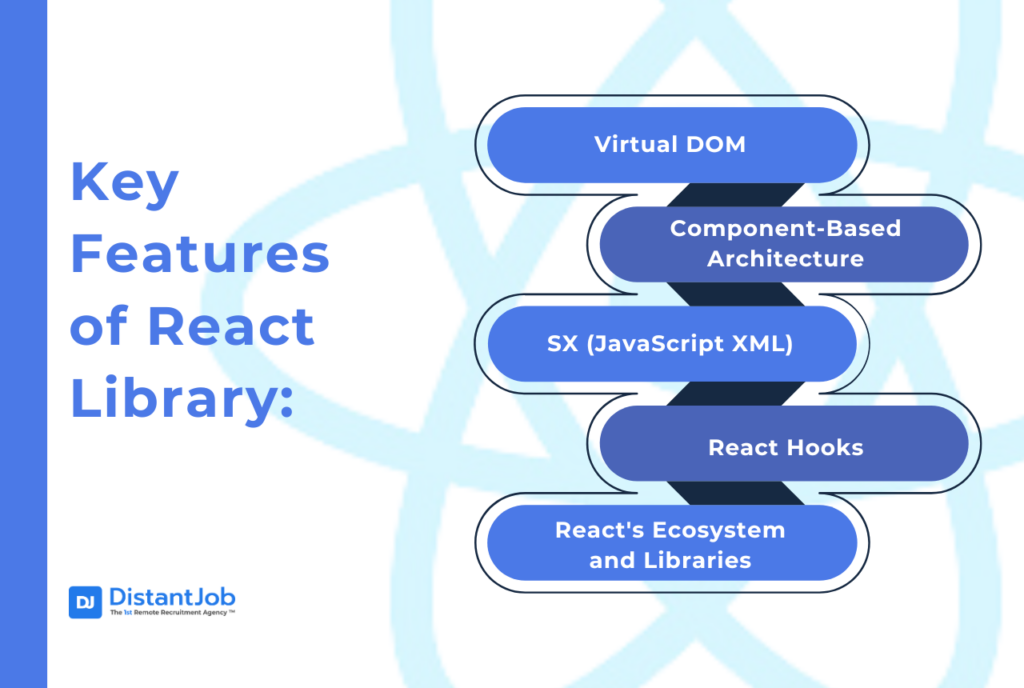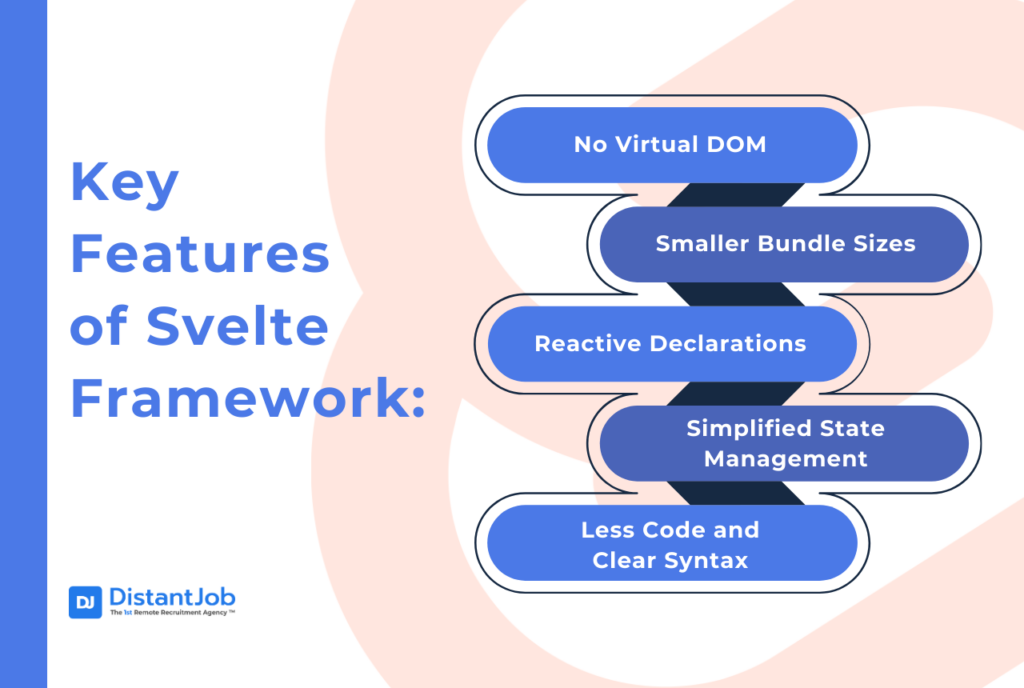Svelte and React are two important tools in the UI universe, with different approaches and intentions towards front-end development and user experience. React seeks to be a powerful library for complex pages, while the open-source framework Svelte uses a compiler to generate optimized, reusable JavaScript code. Between Svelte vs React, which one should you select for your project in 2025?
While React remains popular, according to the 2024 State of JavaScript, Svelte is slowly gaining more adherents, losing popularity only against the JS’ Holy Trinity (React, Vue, Angular).
In this article, we’ll take a close look at how Svelte and React compare, focusing on their performance, functionalities, and developer experience. Whether you’re trying to decide which framework to use for your next project or just want to know what’s new in the coding world, this guide will give you the info you need to make the right choice.
What is React?
React is a popular library (often confused with a framework) to design and create responsive user interfaces (UI) in single-page applications. A single-page application is a page that dynamically changes while you interact with it, rather than loading entirely new pages from the server. Single-page applications provide a more fluid and responsive user experience, similar to a desktop application. React is the most popular library to create them.
React includes a runtime library (think about that as React’s car engine) that uses a virtual DOM, an in-memory virtual copy of the UI. The virtual DOM reconciles UI changes in the browser, which adds a little overhead but helps manage complex UIs.
Through the years, React has become one of the most used front-end libraries backed by a huge ecosystem of tools, libraries, and resources for developers. Its adaptability and ability to grow have played a big part in its ongoing success in the world of web development.
React Key Features:
React’s Ecosystem and Libraries: React’s power comes from its rich and mature ecosystem. It gives you flexibility and control to build your UI.
Virtual DOM: Instead of changing the whole real DOM when something changes, React updates a virtual version of the DOM in memory. It then figures out the smallest set of changes and applies them to the actual DOM.
Component-Based Architecture: Components are UI interface parts, like buttons, cards, lists, etc. React helps you to split the UI into small reusable parts.
JSX (JavaScript XML): React lets you write HTML directly inside your JavaScript using JSX, which can make your UI logic and structure easier to follow—especially once you get the hang of it.
React Hooks: You can use state and other React features in functional components.

What is Svelte?
Svelte is an open-source framework that compiles and generates vanilla JavaScript code for building UIs. Unlike React, Svelte doesn’t rely on a Virtual DOM. Instead, it uses a compiler that shifts the work of updating the UI to compile time. The result is smaller, faster, and more optimized web applications.
It uses Svelte code, a blend of JavaScript, HTML, and CSS. It’s a big deal: Before learning JavaScript, front-end juniors learn HTML and CSS, so they are almost instantly familiar with Svelte code, which becomes pure JavaScript code after compilation. It generates smaller JavaScript bundles, faster loading times, and improved performance, especially on mobile devices.
Svelte has built-in reactivity. When the user triggers a UI change, the UI automatically updates to reflect it without virtual DOM manipulation.
Svelte Key Features
- No Virtual DOM: Svelte turns your app’s parts into streamlined direct code that changes the DOM right away, without the need for a virtual DOM.
- Smaller Bundle Sizes: Svelte’s resulting JavaScript bundles are way smaller than React or Vue. A basic Svelte app can be just a few kilobytes, making it ideal for apps where speed matters.
- Reactive Declarations: You can create reactive values in Svelte that automatically update the UI whenever the underlying data changes, no extra code or wiring needed.
- Simplified State Management: Svelte doesn’t force you to use an extra library to handle global or component-specific state. State is the data that changes over time and affects the interface, for example, the number of items in checkout, or if a menu is open or closed. While React often needs extra libraries for state management, Svelte’s “stores” are built into the framework and need little setup.
- Less Code and Clear Syntax: With Svelte, you get to write clean, straightforward code that feels like plain HTML, CSS, and JavaScript—no extra layers to learn. Unlike React, which asks you to get comfortable with JSX and other tools to manage components, Svelte keeps things simple and intuitive, especially if you prefer working close to the web’s core languages.

Svelte vs React Key Differences
Svelte and React differ significantly in their core approaches to building user interfaces. Svelte compiles code at build time, resulting in smaller bundle sizes and potentially faster initial load times, while React relies on a virtual DOM and performs most of its work at runtime.
Svelte vs React Performance and UX
Svelte generally offers faster initial load times and better runtime performance in low-complexity projects. Meanwhile, React’s performance is good, especially with optimization.
Svelte’s High Performance
Since Svelte does most of its work at build time, the browser has less to do. There’s no virtual DOM overhead, so updates are applied directly. No overhead means faster runtime performance and rapid initial load times. Svelte’s compiled output is tiny (in one example, about 1.6 KB gzipped for the framework code). In the end, Svelte apps feel snappy and use less memory, great for mobile users or slower networks.
React’s Optimized Performance
React can feel a bit more verbose, but it’s built with smart tricks to keep your UI fast and responsive.
Thanks to the virtual DOM, React avoids unnecessary work and updates efficiently—so in most real-world apps, performance isn’t an issue.
That said, you might notice a bit more initial overhead.
React (with its virtual DOM) adds about 42 KB compressed to your bundle, which means a slightly slower first load compared to something like Svelte. But during actual use, React performs really well, and unless you’re building something massive or running benchmarks, the difference usually isn’t noticeable to your users.
Svelte vs React Developer Experience and Learning Curve
From a developer’s point of view, Svelte and React show clear differences in ease of use, tools, and support. Both have large communities, but they suit different needs based on project complexity.
Learning Curve
If you’re looking for something easy to pick up, Svelte might be your best friend.
Its simplified syntax and built-in reactivity feel intuitive—especially if you’re already comfortable with HTML, CSS, and JavaScript.
React, on the other hand, does have a steeper learning curve.
You’ll need to get used to JSX and understand the component lifecycle—but if you’re willing to invest the time, you’ll gain access to a massive ecosystem and community support that can help you scale faster.
Code Simplicity
Svelte emphasizes a ‘less code‘ philosophy, promoting conciseness and readability. Its minimal boilerplate allows developers to focus on core logic. React, using JSX, offers various architectural options but may accumulate more boilerplate, especially for state management.
Tooling and Developer Tools
React boasts a mature ecosystem with extensive tooling. Svelte’s tooling, while growing, is efficient for smaller projects. Both frameworks offer testing utilities, with Svelte providing built-in options and React relying on external tools like Jest.
Ease of Use
Svelte’s straightforward syntax and automatic reactivity streamline development. React’s component-based architecture promotes code reusability but may require more setup. Both frameworks have their strengths, with Svelte often praised for its simplicity.
Svelte vs React Community and Ecosystem
React’s Community and Ecosystem boast an older status and experience, but don’t underestimate Svelte’s freshness. Svelte’s community is growing fast and gaining popularity due to its performance advantages and simpler development experience.
Svelte’s Community Growth
Svelte has experienced remarkable growth since its inception in 2016. Created by Rich Harris, it has gained significant traction in the developer community. Svelte’s GitHub stars have soared from 32,000 in April 2019 to an impressive 56,500. Its usage has increased by 150% in just two years, growing from 8% to 20%. Developers consistently rate Svelte highly, with it being named the most loved framework and having one of the highest satisfaction rates.
React’s Established Ecosystem
React, celebrating its 12th anniversary in 2025, boasts a mature and extensive ecosystem. It remains the most popular front-end library globally, used by tech giants like Facebook, Instagram, and Netflix. React’s ecosystem offers a wealth of tools and libraries, including React Router for routing, Redux Toolkit and Zustand for state management, and various UI component libraries like Material-UI and Chakra UI. This established ecosystem provides developers with a wide range of options for building complex applications.
When to Use Svelte
Choose Svelte for performance, smaller bundle sizes, and a simpler, more intuitive syntax. Svelte is ideal for prototyping or smaller to medium-sized projects where speed is crucial.
When to Use React
Choose React due to its robust, well-established framework with a large community and ecosystem. React is still the industry’s standard for a reason. It works great while working on large, complex applications.
Here is a general guideline on when to use each framework:
| Svelte | React |
| For single-page applications with a high level of interactivity. | Building large-scale web applications that require complex user interfaces. |
| For lightweight web applications with fast performance and minimal overhead. | To develop mobile apps using React Native. |
| Rapid prototyping or building small-scale applications with a simple UI. | For applications that require real-time updates or frequent data changes. |
| To build applications focused on data visualization or animations. | When you need to integrate with a large ecosystem of libraries, tools, and resources. |
| When you need to build an application quickly and efficiently without a steep learning curve. | When you need to work with a team that has experience with React or a larger pool of developers who have experience with React. |
Can I use both Svelte and React?
Technically, one can use Svelte and React in the same project. In practice, it isn’t a good idea. React and Svelte were created to solve the same problem: to build user interfaces. They have different philosophies and inner mechanisms (Virtual DOM vs. Compilation). Mixing them is like having a car with two different engines and incompatible direction systems.
For example, if you use React, you are including the Virtual DOM and Svelte’s JavaScript files in the same project, nullifying the whole point of Svelte (not relying on Virtual DOM and making the UI lightweight).
It would also add complexity, like Svelte’s state management, React’s component lifecycle… You would have to code your interface to interact with both. It would be a nightmare to develop, maintain, and debug the project.
In short, focusing on one of them will spare you from unnecessary complexity.
Svelte vs React vs Vue
Just as React, Vue.js was created to build user interfaces using a Virtual DOM, a declarative development model, and components. But Vue shares some similarities with Svelte, as it has partial state management and a partial compiler.
Vue also has its own easy-to-learn syntax, based on HTML, CSS, and JavaScript (but you can use JSX in some cases. It’s an opinionated framework, offering official solutions for problems.
In short, Vue is the middle path between Svelte and React.
When to use Vue, React, or Svelte
- Vue: Use Vue if you need React’s flexibility and ability to use JavaScript/JSX, but find Svelte’s state management a bit complex or would prefer a more integrated ecosystem. Vue.js offers a modern development experience, with the power of the Virtual DOM, but with a more user-friendly template syntax and official solutions for state management and routing.
- Svelte: Prefer Svelte when the project prioritizes raw performance and minimal bundle size above all else, at the expense of a smaller ecosystem. Svelte will still be your best bet, as its pure compilation approach generally leads to more optimized results.
- React: React is still the dominant choice if the UI needs a massive ecosystem, a vast number of third-party libraries, and you don’t mind choosing your own tools for each part of your application.
Conclusion
When comparing Svelte and React for your project, consider what your application really needs. Svelte shines with its smaller bundles and compile-time tweaks, giving it an edge in performance and faster load times. It is great for mobile users or places with limited bandwidth.
On the other hand, React is better suited for complex, scalable applications that require rich interactivity and strong ecosystem support. With its vast library of third-party tools and a large developer community, React is often the go-to for enterprise-level development.
Don’t forget to consider your team’s skills, how much time you have, and if you need long-term support when you make your choice.
At DistantJob, we focus on finding excellent remote developers who have mastered frameworks such as Svelte and React. Our skilled hiring team ensures you get the best developers for your team, whether you need Svelte or React.
Get in touch with us now to find out how we can help you hire a top-notch developer that fits your company’s goals!





